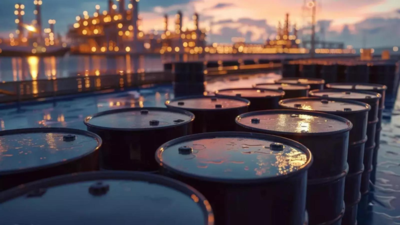ARTICLE AD BOX

Iran has repeatedly warned of blocking the Strait of Hormuz, a narrow yet strategically crucial maritime chokepoint for global oil supply, however, the country has not yet shut it down.
Analysts say that the vital passage has never been shut down and Iran is using this threat as a diplomatic lever and that the chances of an actual shutdown are slim. Additionally, global oil markets are also well prepared to absorb any geopolitical shock from the region."Iran has threatened to close the Strait of Hormuz numerous times in the past but has never followed through, as doing so would be strategically and economically self-defeating," said Hitesh Jain, strategist for institutional equities research at Yes Securities.The Strait, which lies between Iran and the Arabian Peninsula, is the main passage for oil exports from Saudi Arabia, Iran, Iraq, Kuwait and the UAE. It also serves as a key route for liquefied natural gas (LNG) shipments from Qatar. Roughly 20% or one fifth of global oil and a significant share of global LNG passes through this narrow waterway. Over a third of India’s energy needs also travel through the passage.Jain noted that oil markets remain well-supplied, pointing to OPEC’s spare capacity of 4 million barrels per day and a pre-conflict global surplus of 0.9 million bpd as key buffers.
The growing strength of US shale production, he added, further boosted the market’s resilience.Rating agency ICRA echoed the sentiment but added a note of caution, suggesting that crude prices may average to $70-80 per barrel for the current fiscal year. “A sustained flare-up in the conflict poses upside risks for our estimates of crude oil prices, and consequently of net oil imports and the current account deficit (CAD).
A $10 per barrel increase in the average price of crude oil for the fiscal will typically push up net oil imports by $13-14 billion during the year, enlarging the CAD by 0.3 per cent of GDP.”India is heavily reliant on imported energy, with over 85% of its crude oil and around half of its natural gas needs coming from abroad, PTI reported. Imports from Iraq, Saudi Arabia, Kuwait and the UAE, most of which pass through the Strait, account for 40–45% of India’s oil supply.
Roughly 60% of its LNG imports also transit through the same channel.Jain added that the global energy landscape has evolved significantly. Since 2008, the rise of US shale has enhanced global supply and flexibility, allowing markets to absorb geopolitical shocks with only short-lived price spikes. Meanwhile, OPEC’s reduced market share and increased spare capacity, largely from Saudi Arabia and the UAE—have helped keep volatility in check.On the demand side, China’s weak post-COVID recovery and the global shift towards electric vehicles (EVs), improved fuel efficiency, and greener policies are slowing oil demand in OECD countries. “Given this backdrop, Brent crude is unlikely to sustain levels above $80 per barrel in a durable way unless the Strait of Hormuz is closed, or critical Gulf infrastructure is targeted,” Jain noted.The International Energy Agency (IEA) and US Energy Information Administration (EIA) have both trimmed their 2025 global oil demand growth forecastsby 0.2-0.28 million barrels per day.Still, ICRA cautioned that regional risks remain. Iran currently produces about 3.3 million barrels of crude oil per day, of which 1.8–2.0 million bpd is exported. “While Iranian oil and gas facilities have reportedly been attacked, the extent of damage is not clear. However, any disruption of Iranian production and supplies or a wider regional conflict impacting other large producers in the region could push energy prices higher.
”“At these elevated crude oil prices, while the profitability of upstream players will remain healthy and their capex plans will remain intact, the marketing margins of downstream players will be impacted along with the expansion of LPG under-recoveries” the rating agency added.



.png)
.png)
.png)
















 3 hours ago
2
3 hours ago
2









 English (US) ·
English (US) ·